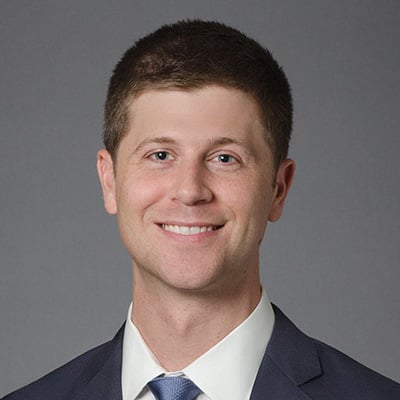Appealing From Bankruptcy Court: An Abbreviated Primer
In this column for New York Law Journal, Kirkland partners George W. Hicks, Jr., and Matthew Fagen discuss several unusual aspects of bankruptcy appeals of which unseasoned practitioners should be aware.
It’s safe to say that there is no busier practice right now than bankruptcy. The commencement of numerous bankruptcy proceedings in the past several months, moreover, means a corresponding wave of bankruptcy appeals in the near future. Appellate practitioners might think that appeals from a bankruptcy court are little different from any other appeal. But just as bankruptcy litigation has a “distinctive character,” Ritzen Group, Inc. v. Jackson Masonry, LLC, 140 S. Ct. 582, 586 (2020), bankruptcy appeals can be an odd duck, too, with a number of quirks that can surprise, if not trip up, an appellate practitioner with little to no prior experience in the field.
This article addresses several unusual aspects of bankruptcy appeals of which unseasoned practitioners should be aware. Although not an exhaustive list, these examples reflect the need for appellate practitioners to exercise diligence, proceed with caution, and never assume anything when treading into the fascinating but relatively foreign world of bankruptcy appeals.
Consult the Federal Rules—of Bankruptcy Procedure. The Federal Rules of Appellate Procedure say nothing about appeals from bankruptcy court judgments; neither, for the most part, do the Federal Rules of Civil Procedure. Instead, one must look to the Federal Rules of Bankruptcy Procedure—specifically, Rules 8001 through 8028. These rules govern bankruptcy appeals and are a must-read when handling your first appeal from a bankruptcy court. In addition to describing the procedural steps for perfecting an appeal, they identify some of the critical differences between bankruptcy court appeals and district court appeals, often reflecting the accelerated nature of the former. For example, a notice of appeal generally must be filed within 14 days of a bankruptcy court judgment, not 30 days.
Similarly, the time to notice an appeal can be extended, but not for certain judgments, including orders granting relief from bankruptcy’s automatic stay, approving non-ordinary-course sales of property, or confirming reorganization plans. And the default briefing schedule is only 30 days for appellant’s opening brief, 30 days for appellee’s response brief, and 14 days for the reply. Be sure also to consult the local rules of the district to which you are appealing, which can supersede the federal bankruptcy rules.
Finally, because bankruptcy appeals are relatively rare in most districts, don’t assume that the district court is familiar with the relevant procedures; be ready to guide the court, especially if you think a rule has been misread or misapplied.
Remember that “Final” Decisions in Bankruptcy May Come Earlier. Congress provided for appeals of decisions in bankruptcy cases “and proceedings,” 28 U.S.C. §158(a), and bankruptcy courts commonly “resolve discrete controversies definitively while the umbrella bankruptcy case remains pending,” Ritzen, 140 S. Ct. at 586-87. Accordingly, decisions that would not be “final” in typical civil litigation may be “final” in bankruptcy litigation.
Failing to identify a decision as final “may cause a party to miss the appellate deadline” and forfeit appellate review. Id. at 587. Practitioners must therefore be attuned to whether a particular bankruptcy court decision is “final” in the bankruptcy sense, meaning whether the decision “conclusively resolve[d] the relevant ‘proceeding,’” id. at 588—an inquiry that, in turn, requires “defin[ing]” the “proceeding,” Bullard v. Blue Hills Bank, 575 U.S. 496, 502 (2015). For example, the Supreme Court has held that an order denying a motion to lift the automatic stay is a “final” decision, because “the appropriate ‘proceeding’ is the stay-relief adjudication.” Ritzen, 140 S. Ct. at 589.
By contrast, an order denying plan confirmation with leave to amend is not a “final” decision, because the “relevant proceeding is the process of attempting to arrive at an approved plan.” Bullard, 575 U.S. at 502. Because these guideposts do not provide ideal clarity, practitioners should research apposite case law and make an informed decision whether a decision ranks as “final” and warrants appeal. Although appealing a decision erroneously thought to be “final” may “yield an appeal over which the appellate forum lacks jurisdiction,” Ritzen, 140 S. Ct. at 587, a dismissed premature appeal is better than a forfeited one.
Determine the First Appellate Court. The district court in which the bankruptcy court is located has jurisdiction to resolve bankruptcy appeals. 28 U.S.C. §158(a). But the U.S. Court of Appeals for the First, Sixth, Eighth, Ninth, and Tenth Circuits have each established a “bankruptcy appellate panel” (BAP), which has concurrent jurisdiction to resolve such appeals. Id. §158(b)-(c). BAP appeals are decided by a panel of three bankruptcy judges; the panel’s decision is appealable to the court of appeals just like a district court’s decision. In circuits with BAPs, there is a presumption that the BAP “shall” resolve appeals from bankruptcy courts. Id. §158(c)(1).
Nevertheless, upon filing the appeal, the appellant may elect district court review; furthermore, any other party has 30 days to elect district court review even if the appellant does not. Id.; Fed. R. Bank. P. 8005. Thus, a BAP may hear an appeal only if all parties consent.
Because a single bankruptcy case may give rise to multiple different appeals, in circuits with a BAP, both the district court and the BAP could simultaneously hear different appeals from the same underlying bankruptcy case. Indeed, the same party could ask the BAP to resolve one appeal and the district court to resolve another appeal, even if both appeals involve overlapping issues. Ultimately, the court that you choose to hear the appeal—whether as appellant or appellee—depends on the circumstances.
Generally speaking, BAPs have greater bankruptcy expertise and may resolve bankruptcy appeals faster than district courts; for example, the Eighth Circuit BAP has committed to deciding cases within 60 days of submission, and the Ninth Circuit BAP’s median time from submission to decision is about thirty days. But district courts offer appellate review by Article III judges; furthermore, there may be times (especially as appellee) when a quicker decision is less preferable.
Consider the Possibility of Direct Appeal. In certain circumstances, an appellant can skip the district court/BAP and appeal directly to the court of appeals. This direct-appeal process requires the bankruptcy court (on motion or sua sponte) or all parties acting jointly to certify that the bankruptcy court’s order involves a question of law on which there is no controlling decision, involves a matter of public importance, or requires resolution of conflicting decisions, or that an immediate appeal may materially advance the case’s progress. 28 U.S.C. §158(d)(2).
Certification is permissible when “any one” of those factors is present. A motion seeking certification of an order for direct appeal must be made within 60 days after the order’s issuance and must specify the question of law justifying the direct appeal. Id. §158(d)(2)(E); see Fed. R. Bankr. P. 8006. If certification is entered, the appellant has 30 days to request permission from the court of appeals to file a direct appeal; that court may (but need not) grant the request. 28 U.S.C. §158(d)(2)(A).
If direct appeal is granted, the court of appeals can review the entire order at issue—not just the question that warranted certification. This procedure is available for interlocutory and final bankruptcy court decisions. See Bullard, 135 S. Ct. at 1695-96. Practitioners representing appellants should carefully consider whether their appeals may qualify for a direct appeal, while practitioners representing appellees should consider whether opposing or supporting direct review is preferable.
Avoid a Finding of “Equitable Mootness.” Under the doctrine of equitable mootness, an appellate court may dismiss a bankruptcy appeal when, “even though effective relief could conceivably be fashioned, implementation of that relief would be inequitable,” typically because a reorganization plan has been substantially consummated, In re Charter Cmmc’ns, Inc., 691 F.3d 476, 481 (2d Cir. 2012), or other actions postdating the appeal and triggering third-party reliance on the decision under review make it “impractical or inequitable to ‘unscramble the eggs,’” In re Castaic Partners II, LLC, 823 F.3d 966, 968 (9th Cir. 2016).
Whether a court will find an appeal equitably moot is based primarily on an appellant’s efforts before the bankruptcy court and district court/BAP to prevent an order from taking effect. Thus, if equitable mootness is a concern, practitioners should move to stay the judgment on appeal—which courts recognize as weighing against a finding of equitable mootness, “even if those efforts [are] unsuccessful,” In re Paige, 684 F.3d 1327, 1340-41 (10th Cir. 2009)—and move to expedite the appeal, see In re Karta Corp., 342 B.R. 45, 52 (S.D.N.Y. 2006); Fed. R. Bankr. P. 8013(a)(2)(B). If the order on appeal is the plan confirmation order, practitioners should also consider seeking relief (in the form of a stay or mandamus) in the court of appeals. See In re Pub. Serv. Co., 963 F.2d 469, 472 (1st Cir. 1992).
Finally, practitioners should utilize (with discretion) the Bankruptcy Rules’ provision for emergency motions. Fed. R. Bankr. P. 8013(d). Although these steps may require a significant, and unanticipated, amount of work at the outset of the appellate process, those costs are well worth avoiding a finding of equitable mootness in an otherwise-meritorious appeal.
George W. Hicks, Jr. is a partner in the Washington, D.C. office of Kirkland & Ellis. Matthew Fagen is a partner in the New York office of the firm.


